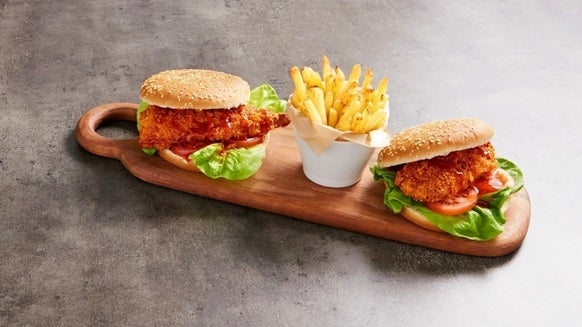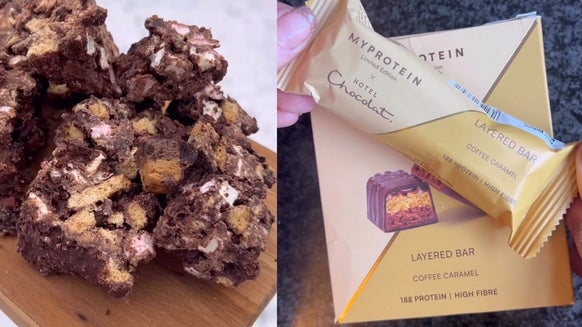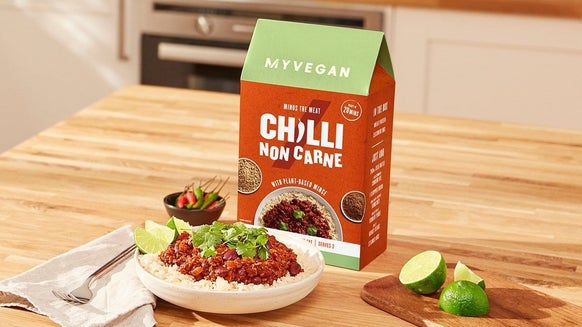What Is Guarana Extract? | Benefits of Drinks & Powdered Supplements

Imagine, it is 1669 and you are a part of a group of intrepid explorers following the renowned missionary, João Felipe Bettendorf searching and exploring the vast, dark and wet Amazon basin.
Your team comes across an indigenous tribe of Indians called the Sateré-Mawé, who demonstrate fantastic and unbelievable feats of endurance and physical ability after consuming bowls of a stimulating beverage they say came from the trees (1).
The tribe elders pull down the yellowish-brown stem which they call guarana, uarana or varana ("vine") and pluck the ripe reddish fruits. They mix the flesh and brown seeds into a pulp to drink, and claim that it is used by their people fight fever, pain and cramps (2-3). They also claim this drink is the source of their tribes physical prowess- a true source of health and mystical energy (4-5).
Congratulations- you have now discovered the magic of Guarana.
What Is Guarana?

Following this 1669 discovery, the western consumption of guarana did not grow until the 18th and 19th centuries (6). However, since this time the myths and legends regarding it’s health properties have grown exponentially.
From a shrub used as an herbal medicine in a remote tribes people, guarana developed into a widely used South American supplement to assist with long voyages; and subsequently into a component of energy drinks worldwide (7).
Cultivated exclusively in Brazil, guarana now exists as the byword for a whole range of branded soft drink beverages which are exported across the planet! In fact in Brazil sales exceed that of any cola flavoured soft drink (1).
To take its full scientific name, Paullinia cupana or Paullinia sorbilis (4, 8-9), the active ingredient of this shrub is an extract which is taken from the seeds of the fruit. It can be found in multiple consumable forms including soft drinks, tablets, gum and a paste.
Approximately 70% of the guarana produced is used in the energy drink industry, with the remaining transferred to the production of supplement forms or used as a raw material in pharmaceuticals and cosmetics.
What does Guarana do?

Due to its indigenous origins a variety of benefits have been linked with this super shrub- including boosting of one's libido (10).
However, the success of production, exporting and consumption of guarana can be explained in one word: caffeine.
You see there is a reason why in Brazil one of the popular names for this supplement is "Zoom" (11-12). The seeds from which the extract is taken consist of between 2.3% (13) and (a massive) 7.8% (14) caffeine!
Whilst there is some variety in caffeine content, to put it in perspective, the average concentration would be greater than both tea and coffee (15). In fact the amount of caffeine in guarana is twice the amount found in Arabica coffee beans (1).
? These levels of high caffeine potency lend guarana it's significant stimulant effects. Such a high concentration of caffeine modifies hormonal action (norepinephrine and epinephrine release) and inhibits central adenosine receptors. Thus, leading to gross central nervous system excitation.
Energy Drinks & Guarana

Energy drinks come in all concoctions and forms, some of which get a boost from added guarana. It is well established that the success and efficiency of energy drinks comes most predominantly from their caffeine content (16-17), which of course can be supplied by this supplement.
? Energy drinks (containing caffeine) show various benefits for performance including delaying training fatigue (18); enhancing muscle strength (18) and increasing muscle endurance (19).
There is also evidence that caffeine positively stimulates our resting energy expenditure, meaning we burn more calories at rest (20-22). This augmentation of metabolism is caused by stimulation of a cycle which boosts levels of adrenalin (21, 23).
Evidence suggests that relatively small doses of caffeine in energy drinks of 2-3mg/ kg of bodyweight are effective at enhancing performance (24). This is an amount of caffeine easily supplied by guarana making it a perfect constituent of energy drink beverages which are sold on the premise of being ergogenic aids.
Guarana & Weight Loss Studies

The mechanism of weight loss facilitated by guarana extract supplements in athletes is extrapolated from data which examines the “fat burning” effects of guarana consumption in sedentary and exercising rats. One study examined the effect of guarana consumption over a period of 14 days on rats, and measured the effect on lipid metabolism (42).
This study showed a reduction in plasma lactate concentration in exercising rats, as well as increased muscle glycogen content. These results would therefore indicate changes in lipid metabolism during exercise and muscle glycogen sparing; changes which these authors explain are dependent on the degree of caffeine in the particular guarana supplement.
However, secondary results of this study outline other potential theoretical weight loss mechanisms. Firstly, food intake was decreased in a higher dose group of guarana, indicating a potential effect on satiety in the test animals. Their results also show that the animals had a reduced content of bodily fat post experiment, which the authors explain is likely due to both caffeine content and theophylline content, which is a potent adenosine receptor antagonist and which has been associated with fat breakdown (43-44).
However, most intriguingly the final weight gain of the animals fed and exercised in the study was lower in a group who were given a decaffeinated guarana extract, which suggests a mechanism beyond the caffeine-induced changes in lipid metabolism. The authors suggest that the content of other biological compounds (tannins and catechine) also contribute to body weight changes following guarana supplementation.
The question remains whether these changes to fat metabolism, body fat content and weight gain actually transfer to us humans if we take a guarana supplement? A randomised controlled trial of a guarana supplement consumed by 67 overweight adults for 8 weeks aimed to shed light on this question (45).
This study gave half of the subjects an herbal weight supplement containing 40mg guarana, alongside a secondary component of 12mg Ma Huang (a preparation from the Chinese plant ephedra sinica); and the other half they gave a placebo supplement. Their results showed an average reduction of weight in the guarana group of 4kg, compared to 0.8kg in the placebo group. They also showed a reduction of 2.1% body fat in the supplement group (compared to 0.2% reduction in the placebo group).
Similar results were seen in a similar trial where guarana was combined with other herbal compounds (including leaves of various plants such as Yerbe mate and Damania) (46). These authors also saw an average of 5.1kg of weight loss over 6 weeks compared to 0.3kg with placebo. Thus demonstratng that (at least in combination with other herbal supplements) guarana extract likely has benefits as a weight loss tool for those trying to shed body fat! Another double-blind, randomised controlled trial investigated weight loss benefits of guarana even further (47).
This study took 14 participants and measured 24 hour energy expenditure following guarana consumption 3 times daily. They found that consumption of a high caffeine guarana supplement boosted energy expenditure by about 750kj within 24 hours.
In combination with studies which indicate an increase in carbohydrate oxidation during exercise by up to 30% (48); then we can hypothesize that increased energy expenditure plus modified substrate utilisation, may lead to reduction in stored carbohydrates and conversion to fat! Hence explaining some of the weight loss properties of guarana supplementation.
Safety & Side Effects

There have been very genuine concerns regarding energy drinks which are plied with excessive amounts of caffeine. Such concerns are not abated by evidence collected by the US Food & Drug Administration (FDA) of at least 23 deaths related to high-caffeine beverage consumption as of November 2012 (49-50). Between 2007 and 2011 emergency room visits increased two fold to 20,783 related to issues involving energy drink consumption (51).
However, as a sole compound guarana has been regarded as safe by the FDA (1) when properly administered (see Dosage). In fact the FDA find no health hazards or side effects with the use of this supplement in normal healthy individuals.
Caution is advised in as risk groups which include those with:
? Sensitive cardiovascular systems
? Kidney disease
? Hyperthyroidism
? Anxiety or panic disorders
? Pregnancy
Toxicity of the substance has been tested and did not induce issues at doses of 500mg-2000mg per kg of bodyweight (1,52). These toxicological findings were supported by results of animal autopsies which showed no change to any organs following high dose of guarana (27, 53).
Furthermore, even prolonged consumption of guarana daily caused no severe adverse reactions or haematological and biochemical changes (54) in healthy volunteers of both sexes.
Certain groups should not take guarana at any stage, and these groups include those:
? History of arrhythmia, Breast feeding, GI obstruction, Chronic headache, Psychiatric disorders and Gastric ulcers. (9,11,55-56)
Guarana Dosage
Therapeutic doses ranging from 200 – 3000mg per day (1), however doses as low as 2-3mg/ kg are effective at improving performance (56).
Short-term treatment of fatigue, exhaustion and headache relief take 1600mg-2000mg per day (1)
Pregnant patients should take less than 300mg of guarana daily if required at all (1)!
Daily oral intake should not exceed 3 grams (9,4).
Take Home Message
From the depths of the Amazon basin comes a caffeine-filled super supplement which boosts health and enhances performance. This herbal solution extracted from the plant is safe and effective, as long as guidelines are not exceeded, giving you more stimulation than your average cup of coffee.
A great substitute to add to a pre-workout to burn more fat and keeping going in the gym. Listen to the Brazilians, and give it a go!
Many thanks, Chris Tack.
- Lim TK. (2013). Paullina Cupana. Edible Medicinal and Non-Medicinal Plants: Volume 6, Fruits, 80-91.
- Maravalhas, N., 1965.Cascado guaraná – matéria-prima paracafeína – método Industrial deextração. In: Química (Ed.), In: estudossobre o guaraná e outras plantas produtoras decafeína .Instituto Nacional de Pesquisas daAmazônia (INPA), Manaus, pp.5–11.
- Henman, A.R., 1986. Vida Natural. O Guaraná: Sua cultura, propriedades, formas de preparação e uso, second ed. Global/Ground,São Paulo
- Henman AR: Guarana (Paullinia cupana var sorbilis): ecological and social perspectives on an economic plant of the central Amazon basin. J Ethnopharmacol 1982; 6:311-338.
- Erickson, H.T., Correa, M.P.F. and ricardo Escobar, J., 1984. Guaraná (Paullinia cupana) as a commercial crop in Brazilian Amazonia. Economic botany, 38(3), pp.273-286.
- Smith, N.,Atroch,A.L.,2007.Guaraná?s journey from regional tonic to aphrodisiac and global energy drink. Evidence-Based Complementary and Alternative Medicine 7,279–282.
- Atroch, A.L., 2009. Avaliação e seleção de progênies de meios irmãos de guaranazeiro (Paullinia cupana var. sorbilis (Mart.) Ducke) utilizando caracteres morfo-agronômicos. Instituto Nacional de Pesquisas da Amazônia – INPA, Manaus – AM, p. 72.
- Belliardo F, Martelli A & Valle MG: HPLC determination of caffeine and theophylline in Puallinia cupana kunth (guarana) and cola spp. samples. Z Lebensm Unters Forsch 1985; 180:398-401.
- Grieve M: A Modern Herbal. Dover Publications, New York, 1971.
- Smith N, Atroch AL (2010) Guaraná’s journey from regional tonic to aphrodisiac and global energy drink. Evid Based Complement Alternat Med 7(3):279–282
- Fetrow CW & Avila JR: Professional's Handbook of Complementary and Alternative Medicines. Springhouse Corporation, Springhouse, PA; 1999.
- McGuffin M, Hobbs C, Upton R et al: A Botanical Safety Handbook. CRC Press, Boca Raton, FL; 1997.
- Spoladore, D.S., Boaventura, M.A.M. and Sáes, L.A., 1987. Teor de cafeína em sementes matrizes do guaranazeiro. Bragantia, 46(2), pp.425-429.
- Antonelli-Ushirobira TM, Yamaguti E, Uemura LM, Nakamura CV, Dias Filho BP, Palazzo De Mello JC (2007) Chemical and microbiological study of extract from seeds of guaraná ( Paullinia cupana var. sorbilis ). Lat Am J Pharm 26(1):5–9
- Heckman, M.A., Weil, J., Mejia, D. and Gonzalez, E., 2010. Caffeine (1, 3, 7?trimethylxanthine) in foods: a comprehensive review on consumption, functionality, safety, and regulatory matters. Journal of Food Science, 75(3), pp.R77-R87.
- McLellan TM, Lieberman HR. Do energy drinks contain active components other than caffeine? Nutr Rev. 2012;70:730Y744.
- Heneghan C, Gill P, O’Neill B, et al. Mythbusting sports and exercise products. BMJ. 2012;345:1Y7.
- Dunford M, Coleman EJ. Ergogenic aids, dietary supplements, and exercise. In: Rosenbloom CA, Coleman EJ, eds. Sports Nutrition: A PracticeManual for Professionals, 5th ed. Chicago, IL: Academy of Nutrition and Dietetics; 2012:128Y161.
- Davis JM, Zhao Z, StockHS, Mehl KA, Buggy J, Hand GA. Central nervous system effects of caffeine and adenosine on fatigue. Am J Physiol. 2003;284:R399YR404.
- Dalbo VJ, Roberts MD, Stout JR, and Kerksick CM. Acute effects of ingesting a commercial thermogenic drink on changes in energy expenditure and markers of lipolysis. J Int Soc Sports Nutr 5: 6, 2008
- Dulloo AG, Geissler CA, Horton T, Collins A, and Miller DS. Normal caffeine consumption: Influence on thermogenesis and daily energy expenditure in lean and postobese human volunteers. Am J Clin Nutr49: 44–50, 1989.
- Taylor L, Wilborn C, Harvey T,Wismann J, and Willoughby D. The effects of JavaFit Energy Extreme coffee ingestion on resting energy expenditure and hemodynamic responses. J Int Soc Sports Nutr 2: 2, 2005.
- Graham TE, Hibbert E, and Sathasivam P. Metabolic and exercise endurance effects of coffee and caffeine ingestion. J Appl Physiol85: 883–889, 1998.
- Klepacki, B., Energy Drinks: A Review.Strength and Conditioning Journal. 32.1 (Feb 2010): 37-41
- Aro A, et al: Effects of guar gum in male subjects with hypercholesterolemia. Am J Clin Nutr 1984; 39:911-916.
- Krotkiewski M. Effect of guar gum on body-weight, hunger ratings and metabolism in obese subjects. Br J Nutr 1984; 52:97-105.
- Mattei R, Dias RF, Espínola EB, Carlini EA, Barros SB (1998) Guarana ( Paullinia cupana ): toxic behavioural effects in laboratory animals and antioxidants activity in vitro. J Ethnopharmacol 60(2):111–116
- Machado, A.K., Cadoná, F.C., Azzolin, V.F., Dornelles, E.B., Barbisan, F., Ribeiro, E.E., Mânica-Cattani, M.F., Duarte, M.M.M.F., Saldanha, J.R.P. and da Cruz, I.B.M., 2015. Guaraná (Paullinia cupana) improves the proliferation and oxidative metabolism of senescent adipocyte stem cells derived from human lipoaspirates. Food Research International, 67, pp.426-433.
- Basile A, Ferrara L, Pezzo MD, Mele G, Sorbo S, Bassi P, Montesano D (2005) Antibacterial and antioxidant activities of ethanol extract from Paullinia cupana Mart. J Ethnopharmacol 102(1):32–36
- Bulku E, Zinkovsky D, Patel P, Javia V, Lahoti T, Khodos I, Stohs SJ, Ray SD (2010) A novel dietary supplement containing multiple phytochemicals and vitamins elevates hepatorenal and cardiac antioxidant enzymes in the absence of signi fi cant serum chemistry and genomic changes. Oxid Med Cell Longev 3(2):129–144
- Fukumasu H, Avanzo JL, Heidor R, Silva TC, Atroch A, Moreno FS, Dagli ML (2006a) Protective effects of guarana ( Paullinia cupana Mart. var. sorbilis ) against DEN-induced DNA damage on mouse liver. Food Chem Toxicol 44(6):862–867
- Fukumasu H, da Silva TC, Avanzo JL, de Lima CE, Mackowiak II, Atroch A, de Souza SH, Moreno FS, Dagli ML (2006b) Chemopreventive effects of Paullinia cupana Mart var. sorbilis , the guaraná, on mouse hepatocarcinogenesis. Cancer Lett 233(1):158–164
- Fukumasu H, Avanzo JL, Nagamine MK, Barbuto JA, Rao KV, Dagli ML (2008) Paullinia cupana Mart var. sorbilis , guaraná, reduces cell proliferation and increases apoptosis of B16/F10 melanoma lung metastases in mice. Braz J Med Biol Res 41(4):305–310
- Fukumasu H, Latorre AO, Zaidan-Dagli ML (2011) Paullinia cupana Mart. var. sorbilis, guarana, increases survival of Ehrlich ascites carcinoma (EAC) bearing mice by decreasing cyclin-D1 expression and inducing a G0/G1 cell cycle arrest in EAC cells. Phytother Res 25(1):11–16
- Majhenic L, Skerget M, Knez Z (2007) Antioxidant and antimicrobial activity of guarana seed extracts. Food Chem 104(3):1258–1268
- Yamaguti-Sasaki E, Ito LA, Canteli VC, Ushirobira TM, Ueda-Nakamura T, Dias Filho BP, Nakamura CV, de Mello JC (2007) Antioxidant capacity and in vitro prevention of dental plaque formation by extracts andcondensed tannins of Paullinia cupana . Molecules 12(8):1950–1963
- Kennedy DO, Haskell CF, Wesnes KA, ScholeyAB (2004) Improved cognitive performance in human volunteers following administration of guarana ( Paullinia cupana ) extract: comparison and interaction with Panax ginseng . Pharmacol Biochem Behav 79(3):401–411
- Haskell CF, Kennedy DO, Wesnes KA, Milne AL, Scholey AB (2007) A double-blind, placebo-controlled, multidose evaluation of the acute behavioral effects of guaraná in humans. J Psychopharmacol 21(1):65–70
- Scholey A, Haskell C (2008) Neurocognitive effects of guaraná plant extract. Drugs Fut 33(10):869–874
- Da Costa KC, Ribeiro EE, Ribeiro EA, Moresco RN, Marques UdRMI, Santos Montagner GF, Machado MM, Viegas K, Brito E, da Cruz IBM (2011) Habitual intake of guaraná and metabolic morbidities: an epidemiological study of an elderly Amazonian population. Phytother Res 25:1367–1374
- Lalor BC, et al. Placebo-controlled trial of the effects of guar gum and metformin on fasting blood glucose and serum lipids in obese, type 2 diabetic patients. Diabetic Med 1990; 7:242-245.
- Lima, W.P., Carnevali, L.C., Eder, R., Rosa, L.F.B.C., Bacchi, E.M. and Seelaender, M.C., 2005. Lipid metabolism in trained rats: effect of guarana (Paullinia cupana Mart.) supplementation. Clinical Nutrition, 24(6), pp.1019-1028
- Peters EJ, Klien S, Wolfe RR. Effect of short-term fasting on the lipolytic response to theophylline. Am J Physiol 1991;261:E500–4.
- Raguso CA, Coggan AR, Sidossis LS, Gastaldelli A, Wolfe RR. Effect of theophylline on substrate metabolism during exercise.Metaboilism 1996;45:1153–60.
- Boozer, C.N., Nasser, J.A., Heymsfield, S.B., Wang, V., Chen, G. and Solomon, J.L., 2001. An herbal supplement containing Ma Huang-Guarana for weight loss: a randomized, double-blind trial. International Journal of Obesity & Related Metabolic Disorders, 25(3).
- Anderson T, Foght J (2001) Weight loss and delayed gastric emptying following a South American herbal preparation in overweight patients. J Hum Nutr Diet 14(3):243–250
- Bérubé-Parent, S., Pelletier, C., Doré, J. and Tremblay, A., 2005. Effects of encapsulated green tea and Guarana extracts containing a mixture of epigallocatechin-3-gallate and caffeine on 24 h energy expenditure and fat oxidation in men. British Journal of Nutrition, 94(3), p.432
- Sale C, Harris RC, Delves S, Corbett J (2006) Metabolic and physiological effects of ingesting extracts of bitter orange, green tea and guarana at rest and during treadmill walking in overweight males. Int J Obes (Lond) 30(5):764–773
- Food andDrug Administration. Energy ‘‘drinks’’ and supplements: investigation of adverse event reports. http://www.fda.gov/Food/NewsEvents/ucm328536.htm. Accessed December 10, 2013.
- WebMD. More deaths, illness linked to energy drinks. http://www.webmd.com/diet/news/20121116/more-deaths-illnessenergy-drinks. Accessed December 10, 2013.
- Substance Abuse and Mental Health Services Administration, Center for Behavioral Health Statistics and Quality. The DAWN Report:Update on Emergency DepartmentVisits Involving Energy Drinks: A Continuing Public Health Concern. Rockville,MD. January 10, 2013.
- Miura T, Tatara M, Nakamura K, Suzuki I.(1998). Effect of guarana on exercise in normal and epinephrine-induced glycogenolytic mice. Biol Pharm Bull.21(6):646-8.
- Santa Maria A, Lopez A, Diaz MM, Muñoz-Mingarro D, Pozuelo JM (1998) Evaluation of the toxicity of guarana with in vitro bioassays. Ecotoxicol Environ Saf 39(3):164–167
- Oliveira CH, Moraes ME, Moraes MO, Bezerra FA, Abib E, De Nucci G (2005) Clinical toxicology study of an herbal medicinal extract of Paullinia cupana, Trichiliacatigua, Ptychopetalum olacoides and Zingiber of fi cinale (Catuama) in healthy volunteers. Phytother Res 19(1):54–57
- Micromedex® Healthcare Series: MICROMEDEX, Inc., Vol.115 Englewood, CO (Edition expires [3/2003]).
- Pipe, Andrew et al. Nutritional Supplements and Doping. Clinical Journal of Sport Medicine, July 2002; 12(4) pp. 245-9.








